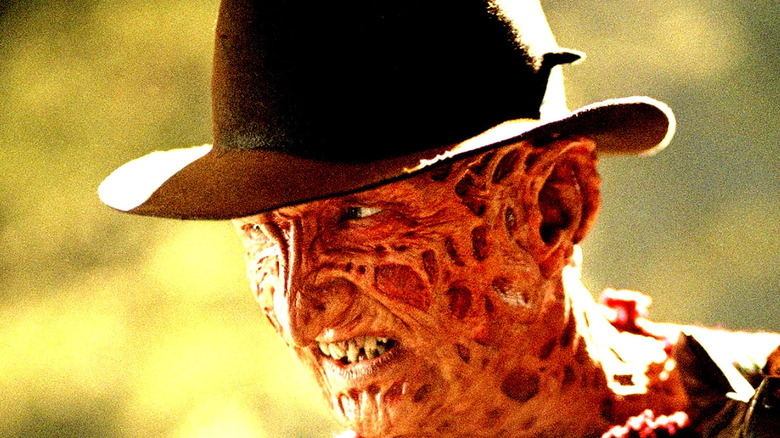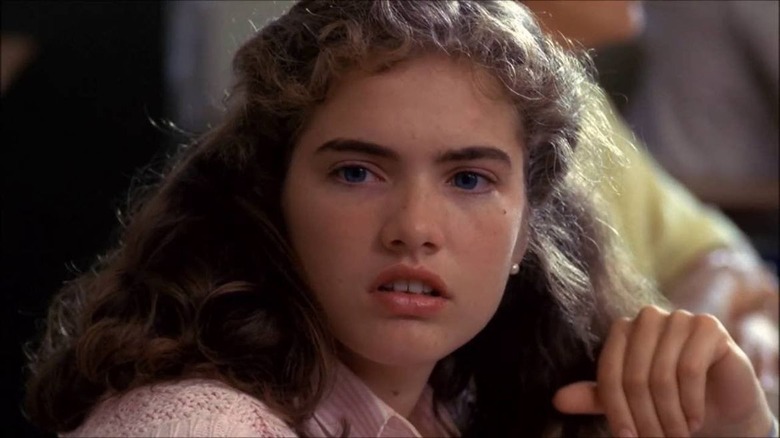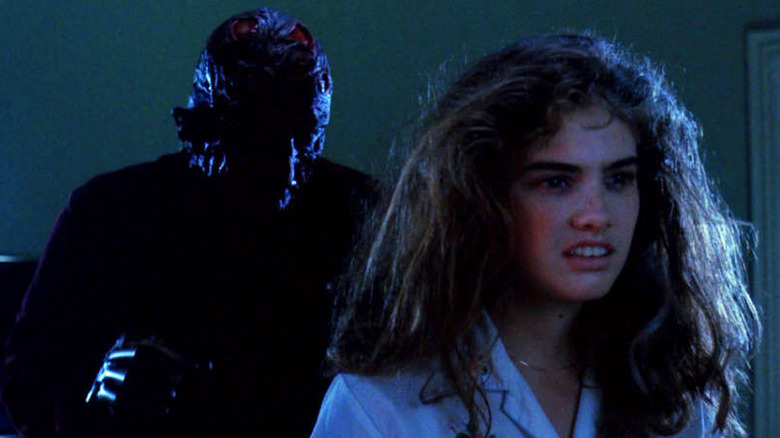The Ending Of A Nightmare On Elm Street Explained
It's nearly Halloween time, and with spooky season comes the fascination with horror movies both new and classic alike. There are plenty of famous horror movies, and one would be hard-pressed to find anyone who hasn't at least heard of "A Nightmare on Elm Street" or its various sequels. The original, created by renowned horror maestro Wes Craven, is arguably one of the pinnacle entries in the slasher genre (per Rotten Tomatoes). But it's somewhat more unique in its execution than some of its peers since its antagonist has such an unusual way of claiming his victims.
Freddy Krueger (Robert Englund) haunts his victims' dreams, and when they are killed there, they die in the real world. This adds a surreal, dream-like quality to the film that also makes it a more distinct viewing experience than other films in the genre. It also begs the question: How does someone defeat Freddy if he only exists in the dreamscape? This is a question that protagonist Nancy Thompson (Heather Langenkamp) and her friends explore during "A Nightmare on Elm Street." Despite the events that follow in subsequent films in the franchise, the original movie seemingly answers this question toward the end, though in a way that keeps its dream logic plot intact.
Freddy Krueger can be pulled into the real world
Toward the end of "A Nightmare on Elm Street," Nancy is forced to go to a clinic due to her inability to sleep without being terrorized by Freddy. Naturally, this nearly ends in disaster, as Freddy almost kills Nancy in the horrific dreamscape. However, she is able to wake up before he can kill her, but not before grabbing hold of Freddy's hat and yanking it into the real world with her. This finally offers Nancy a solution when it comes to defeating Freddy once and for all and ending his reign of terror on her and her loved ones.
Nancy sets up various traps around her house and then goes to the dream world to confront Freddy. This is a pivotal moment in the movie, as it shows Nancy overcoming her fear of Freddy, which is a culmination of her character arc and the key to defeating this monster in her nightmares. Indeed, she's already lost so many of her friends throughout the film, so she decides to at least bring things to an end on her terms. Nancy is ultimately successful in bringing Freddy to the real world, where she defeats the paranormal serial killer by turning the tables on him and ensuring that he's the one afraid. However, there's a dark twist lingering in the shadows of this third act.
Can nightmares ever truly be defeated?
One would think that Nancy defeating Freddy Krueger would be where the film decides to roll the credits. Victory has been achieved, and everyone is happy again. But while this was planned as the original ending, producers wanted something scarier, so the film takes a deep dive into the dream logic that it set up throughout its runtime (per Vulture). Almost immediately after defeating Freddy by refusing to succumb to fear, the scene changes to morning. Nancy gets in a car with her friends, who are all inexplicably alive again. Then, happiness turns to horror as the car doors lock and the vehicle speeds down the road as if controlled by some evil force. Nancy's mother, Marge Thompson (Ronee Blakley), is grabbed by Freddy, and the film ends.
Taken at face value, this ending seemingly reveals that Freddy Krueger is still alive and well, but it's perhaps a bit ambiguous than that. It's possible that this was yet another dream of Nancy's or a hint that she had never truly pulled Freddy out of the dream in the first place. Alternatively, a darker read on it is that even in the real world, the nightmare of Freddy could not be defeated. Future films in the franchise would all but ignore this ending, but its ambiguousness has perplexed audiences for decades, leading to many discussions (and several Reddit threads on the topic) about what it all actually means.


